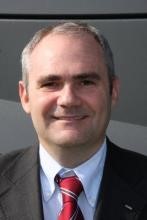RWTH Laboratory Reference Implementation
Development of a real-time simulation platform for the testing and validation of services, 5G network infrastructure, and SOGNO cloud architecture.
Location
Aachen, Germany

Local situation
Real-time simulations are an essential step to test, assess, and validate hardware or software solutions conceived for the management of the electric grid. They usually represent a preliminary step before the implementation in the field, because they allow testing the devised technologies in realistic conditions without the risk to jeopardize the normal operation of the system. The real-time simulation platform available in RWTH offers the possibility to assess the robustness of automation schemes against several issues occurring in real scenarios, like time delays, communication issues, interactions among different components, which cannot be evaluated when running a simple and dedicated off-line simulation. Thanks to the close collaboration with Ericsson, the RWTH simulation platform can also integrate mobile communication and 5G technology in the simulation loop, achieving power system and communication co-simulation capabilities that are key for the demonstration of the overall SOGNO solution.
Trial Site set up and what will be done
THE RWTH Laboratory Reference Implementation aims at developing the complete version of the SOGNO ecosystem in the laboratory. The reference implementation will be connected to the real time modelling infrastructure of RWTH Aachen to provide complete full cases of test. The model used by the real time simulation will be validated using the measurement data of the field trials, which will provide all the necessary information to tune the RWTH setup to be a very reliable representation of the physical trials running in parallel. The models will run on the advanced RTDS installation in RWTH and will be tested also on the new real-time power system simulator under development in RWTH. The power system simulations will be connected through a dedicated base-station from Ericsson to a live 5G network so that also the communication element will be tested. Such a platform will allow for the testing and the preliminary validation of the different automation components and solutions developed during the project.
Interview with Prof. Monti, RWTH Aachen University
Prof. Monti is the director of the Institute for Automation of Complex Power System within the E.ON Energy Research Center at RWTH Aachen University. He is author or co-author of more than 200 peer-reviewed papers published in international Journals and in the proceedings of International conferences. He is a Senior Member of IEEE and Associate Editor of the IEEE System Journal and of IEEE Electrification Magazine.
Question 1: What is the special focus of the SOGNO demonstration site (especially compared to the other sites)?
SOGNO sees the full implementation of the designed solutions and their integration in the real field as a key activity to bring the idea closer to market. However, testing in a power system is always a hard task because many of the operations require putting the infrastructure at risk. For this reason, it is difficult to imagine the full deployment and validation of an automation architecture without a preliminary verification stage in laboratory. The implementation of the overall SOGNO ecosystem in the RWTH laboratory is thus a key step to prove the value of the complete solution proposed in this project. Thanks to the real-time simulation capabilities of RWTH and the communication base-stations provided by Ericsson, it is possible to run co-simulations of the electric and the communication infrastructure, which will give a reliable validation of the SOGNO solutions before their deployment on the real grids.
Question 2: What are the long-term benefits for your company you expect from being part in the SOGNO project?
See real-field trial document.

Prof. Monti, RWTH Aachen University

